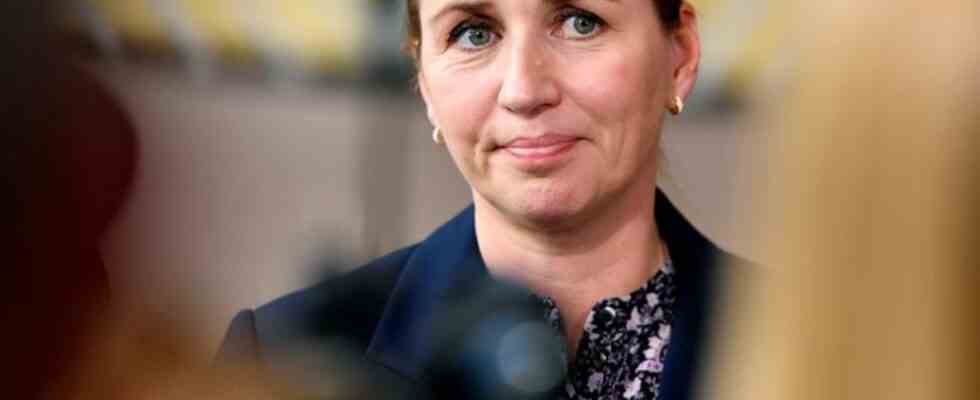Choose
Denmark votes: Struggle for a majority in the political center
Mette Frederiksen is Prime Minister of Denmark. photo
© Geert Vanden Wijngaert/AP/dpa
So far, Danish politics has been divided relatively clearly into two camps. A lot is different this time – and not only the prime minister is elbowing out in the political center.
Germany’s northern neighbor Denmark is electing a new parliament today. The election campaign was primarily focused on domestic issues, the fight against inflation and high energy prices.
From 8 a.m. to 8 p.m., almost 4.3 million Danes now have the opportunity to put their cross. Among them are more than 200,000 first-time voters. The first forecasts are expected immediately after the polling stations close in the evening, with a provisional final result during the course of the election night. Rarely has it been so uncertain what the next Danish government will look like.
A total of 179 seats in Parliament in Copenhagen are up for grabs. Two each are intended for representatives of Greenland and the Faroe Islands, both of which are officially part of the Danish kingdom.
The Social Democratic Prime Minister Mette Frederiksen has led Denmark with a minority government made up exclusively of her party since she won the election three and a half years ago. For political majorities, she relies primarily on the support of her left-wing camp, but in the strict immigration policy, for example, on votes from the conservative right-wing bloc.
Frederiksen is striving for a center alliance
This time, Frederiksen is aiming for a government across traditional bloc borders that is rare for her country. In view of the energy crisis, the Ukraine war and other crises, the 44-year-old believes it is the right time to create broad government cooperation in the political center.
However, a centre-right alliance does not want to take part. This blue bloc is led by the leader of the liberal-conservative party Venstre, Jakob Ellemann-Jensen. It consists of six liberal, conservative and right-wing parties. Among them is the right-wing populist Danish People’s Party, which is deep in crisis: in 2015 it had a whopping 21.1 percent, but then plummeted to 8.7 percent in 2019 – and could now even get past the low two percent hurdle to enter parliament fail. On the one hand, this is due to internal party disputes, but on the other hand, the fact that the issue of immigration hardly played a role in the election campaign.
Moderates could play a key role
Two former top politicians left Venstre, which was also in crisis, in 2021 to found their own parties. Former Minister for Foreign Affairs Inger Støjberg founded the so-called Denmark Democrats, ex-Prime Minister Lars Løkke Rasmussen founded the Moderates. Many true Venstre voters are now drawn to these two parties.
Løkke in particular could shake up the political status quo in the election: while Støjberg is in the blue block, the former prime minister is right between the political camps. Polls indicate that both left and right blocs would not have a majority without the moderates. That could give Løkke the key role of kingmaker.
As in the 2019 election – at that time still as Venstre boss – he advocates cross-block cooperation. Venstre boss Ellemann-Jensen, on the other hand, wants to get him on his side. “If the things that you dream of and that grew in our former backyard together … yes, then come home,” he said on Sunday in a TV debate of the leaders of the 14 parties who have a chance of moving in make to parliament, to Løkke.

